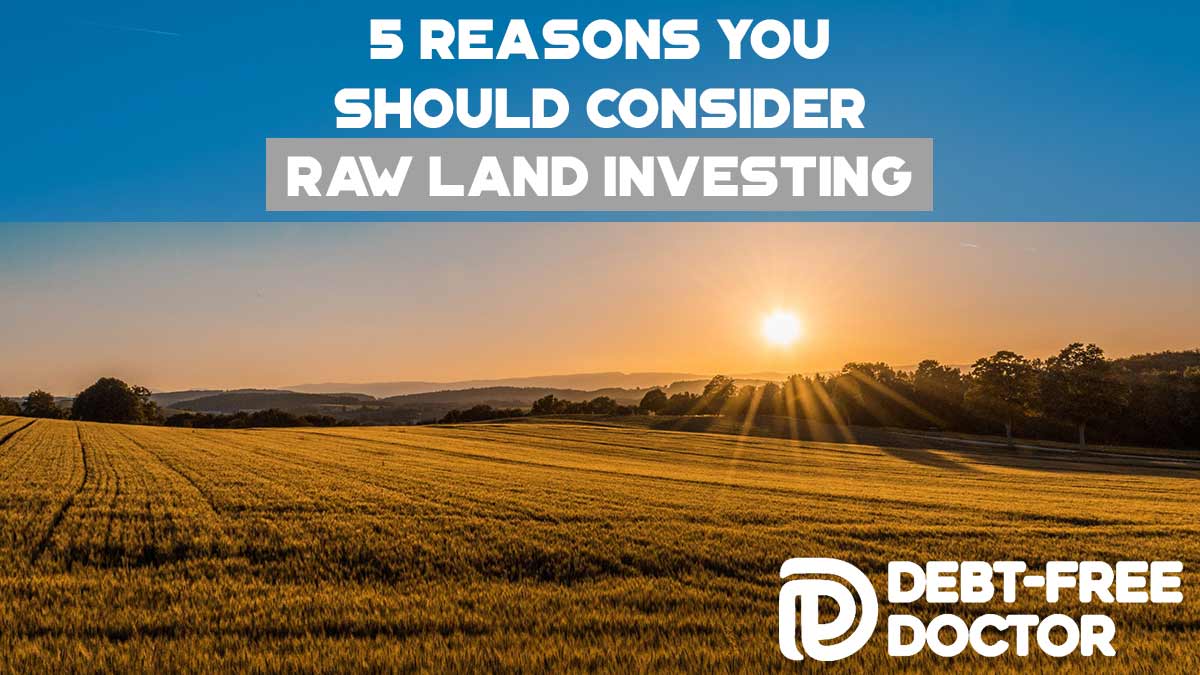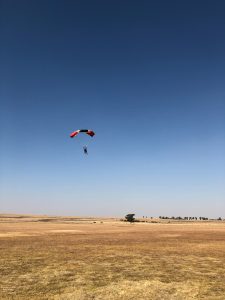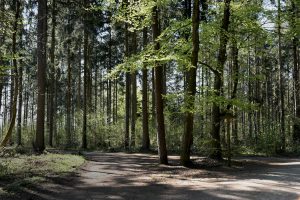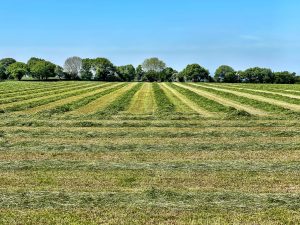If I were to ask you what it means to invest in real estate, how would you answer?
If you’re an average real estate investor, you may state it has to do with buying a single family home or apartment.
Or if you invest passively (like me), you might say it involves pooling your money with others (syndication) to invest in:
One of the common traits of all of the above mentioned assets are that they’re physical in nature. To most people, real estate is about some type of building or structure that people use.
But what if I were to tell you there’s another type of real estate investment strategy that’s hands-off (I like that part), typically overlooked and yet can produce some of the most lucrative and high returns out there (27+%).
Interested?
If you’re the type of person who loves to generate money passively, then investing in vacant land might be a great path for you to look into.
Now I know what you’re thinking… invest in land that’s just sitting there?
How can I make money?
Many people typically have a misconception when it comes to investing in vacant land because they feel:
- It doesn’t produce income.
- It’s boring
- It’s just sitting there doing nothing.
It’s too bad that people feel this way because undeveloped land is capable of providing returns with impressive cash flow.
Owning the right property that’s purchased at the right price and right time can significantly outweigh many of the potential risks that come with owning other types of rental properties.
If you’re not sure how land ownership works and want to learn how to obtain significant returns on your money, then read on….
Don’t Miss Any Updates. Each week I’ll send you advice on how to reach financial independence with passive income from real estate.
Sign up for my newsletterRaw Land vs Developed Land
In real estate investing, there’s 3 types of assets you can invest in:
- commercial property
- residential property
- land
Raw land
Raw land is just as it sounds, a “raw” or vacant plot of land without buildings or other structures present.
This type of land has not been developed or prepared for construction.
In essence, it’s basically untouched terrain that can be used for the future development of residential, recreational land, commercial, farmland, agricultural land, or natural resources (mineral/water rights).
Developed land
Developed land is land that’s been developed and/or improved for a specific need such as residential use, farming, etc.
Investing in developed land vs raw land can be more costly due to having to pay for the “already been performed” developments up front plus the original cost of the land itself.
Zoning of Raw Land
In order to determine how raw land can be developed and used in the future, it first has to be zoned.
8 Main Categories of Land Use
#1 Multifamily
#2 Residential
#3 Industrial
#4 Commercial
#5 Agriculture
#6 Parks and open spaces
#7 Institutional use (such as a library, bus station, public school, etc.)
#8 Right of way use (road access or easement which gives people access to their property through another land tract)
Within these 8 categories, there exists several subcategories. These will determine the development size based on the density of the area or the type of property that can be built or not.
5 Reasons You Should Consider Raw Land Investing
If you want to step outside the box, diversify your real estate portfolio and become a well-rounded investor, a raw land investment can set you on the right path.
Let’s take a look at 5 reasons you should consider joining the growing list of raw land investors…
#1 Land is a limited resource
“Buy land. They’re NOT making it anymore.” – Mark Twain
As our population continues to grow, the availability of raw land diminishes.
Why?
It’s nothing more than a supply and demand scenario. The more people we put on the planet, the HIGHER the need for land.
And there is only so much land available.
Because it’s becoming such a scare resource, it tends to hold its value more even when market conditions are not so good.
#2 Low maintenance
Due to the fact that raw land has yet to be developed (no structures to upkeep or tenants to deal with), it has little to no maintenance.
Other than paying the property taxes and keeping the land mowed, that’s about that’s required to maintaining it.
#3 Great return on investment (ROI)
Depending on how the land investment is purchased and sold, it can produce passive income and/or large profits similar to residential and commercial real estate investing.
Not only can you earn passive income with vacant land, it’s also very possible to obtain high double digit returns on your investment if you buy the right piece of land at the right price.
Similar to all real estate, money is made on the BUY.
Does that make sense?
#4 Low cost
Out of all the real estate assets that can be invested in, raw land can be one of the lowest cost investments out there.
Typically its value will depend on:
- land type
- location
- number of acres of land being sold
#5 Big opportunity – little competition
As you can imagine, there are MUCH less people that invest in land versus those that invest in commercial or residential real estate.
Because of this lower competition, it allows vacant land to hold a tremendous amounts of opportunities.
As long as you’re willing to do your homework, you should be able to find great deals as in general there’s more vacant land than there are land investors.
What To Consider Before Investing In Land
All raw land is not created the same. The value of a property can be significantly impacted by environmental factors.
Also, when you’re evaluated land to invest in, make sure it’s able to be developed for its intended use.
Due diligence should be performed on:
- what it’s zoned for
- any restrictions based on zoning laws
- yearly property taxes
- current or potential future value
- demand for similar land type in the area located
- if it’s able to be accessed or if ingress and egress rights are needed
- if it has infrastructure such as water, electricity, septic or sewer, or it will need to be added in the future
If you’re not able to perform the necessary due diligence yourself, make sure that you work with someone (or group) that has experience with land investing.
Interested In Earning Lucrative Returns?
Currently, there’s a 2:1 demand to supply ratio for land, meaning there’s twice as much demand for land as there is supply.
As a result, 40% of homes are in back log because there’s not enough land available for building new homes.
This has driven a 20% year-over-year growth in planned communities.
Join the Passive Investors Circle




